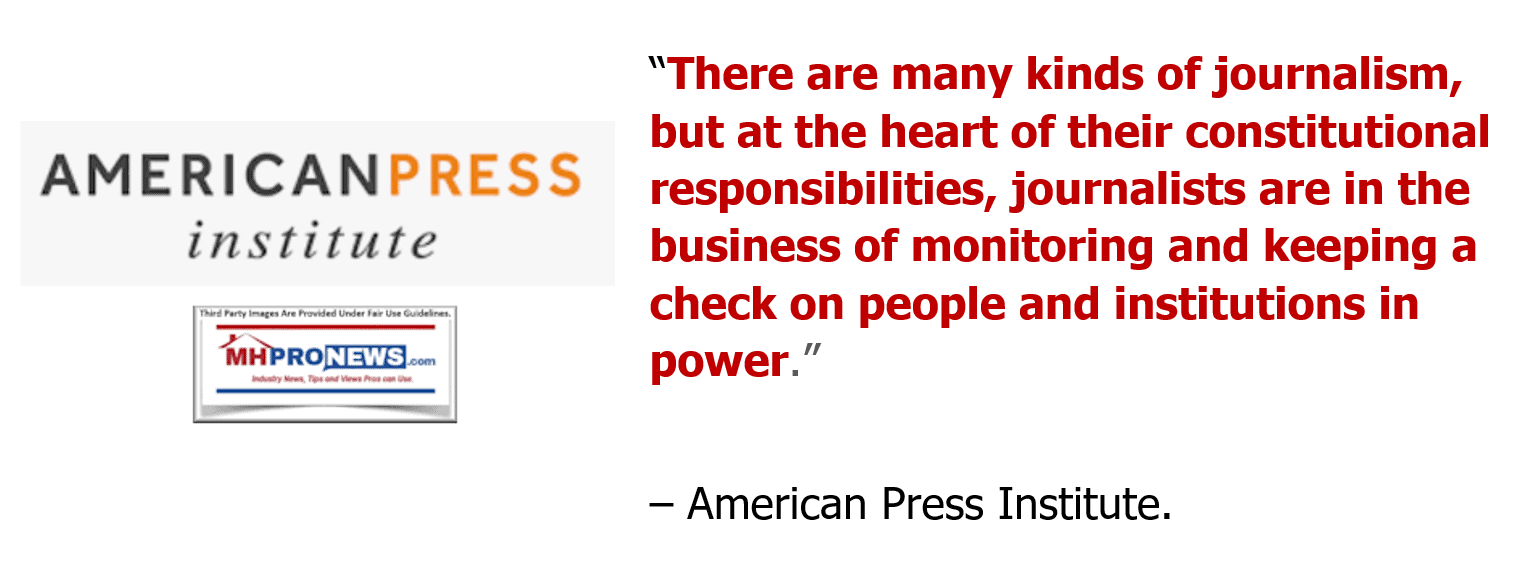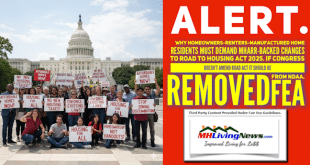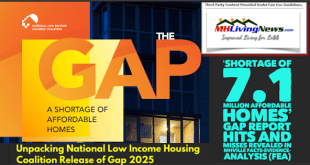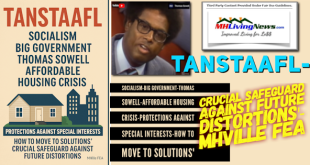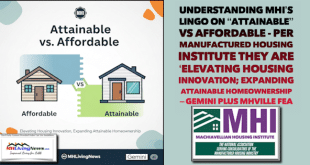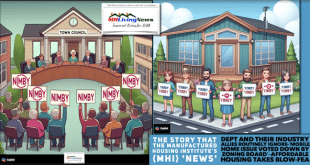As part of the featured image for this report by Now Earth reflects, the number of misleading headlines and reports surrounding the Department of Energy (DOE) manufactured housing energy rule are numerous. Since June 15, 1976 all HUD Code manufactured homes had to meet specific energy standards. Those standard demonstrably saved consumers money, especially when compared with pre-HUD Code mobile homes that in various instances lacked such standards. But that is just part of the troubling way the battle over the manufactured housing energy rule developed. With that brief tee up, in a 7.11.2022 emailed news release to MHLivingNews, the Manufactured Housing Association for Regulatory Reform (MHARR) provided the following statement which had as an attachment the recent, exclusive Q&A with MHARR founding President and CEO Danny Ghorbani with MHProNews. Their release and the Q&A that follow tell a vexing tale of how manufactured homes, per MHARR, are being asked to meet standards that far more costly conventional housing in dozens of states are not required to meet. Which begs the question: is the DOE trying to keep lower income Americans – which are routinely includes minorities, seniors and younger renters – from becoming homeowners? How does it help lower income Americans to keep them in older rental housing that isn’t as often not as energy efficient as modern manufactured homes?
JULY 11, 2022
TO: HUD CODE MANUFACTURED HOUSING INDUSTRY MEMBERS
FROM: MHARR
RE: DOE MANUFACTURED HOUSING ENERGY FINAL RULE
As you are aware, the U.S. Department of Energy (DOE) published its final manufactured housing energy conservation standards rule on May 31, 2022. With implementation of the rule scheduled for May 31, 2023, and with the clock running, there have been an increasing number of requests, questions and concerns expressed regarding potential ways, means and actions by which this excessive and baseless regulation can be blocked prior to its implementation. At the same time, there have been serious inquiries regarding the fifteen-year-long DOE rulemaking process — and the role of the industry’s two national representations in that process — which has now resulted in one of the most egregious and costly regulations ever imposed on the HUD Code industry and its consumers.
To better understand the contrived rulemaking process and the actions (or lack thereof) leading to this disproportionate, discriminatory and destructive regulation, attached for your review, information and consideration, is a reprint copy of a recent Question and Answer (Q&A) column between industry publication MHProNews and Danny Ghorbani, MHARR’s former President and CEO, which addresses most of the prevailing questions and concerns. As this comprehensive analysis demonstrates (and as has been detailed in previous MHARR submissions to DOE), the DOE rulemaking process, from the outset, was fatally tainted by closed-door coordination between DOE, an ad hoc group of energy special interests and part of the industry itself. While DOE has claimed multiple times that subsequent rulemaking activity “moved past” this illicit coordination, it is evident from a careful analysis of DOE’s final standard that the May 31. 2022 rule continues to be fundamentally and irretrievably tainted, infected and corrupted by that activity.
This analysis, moreover, continues to demonstrate the urgent need for concerted industry action, notwithstanding past mistakes, to stop the DOE final rule and compel DOE to fully comply with all applicable law, including the mandatory, primary involvement of the statutory Manufactured Housing Consensus Committee (MHCC).
MHARR will continue to keep you updated on this crucial matter as the time for key decisions and further action approaches.
cc: Other Interested DOE MH Energy Rule Stakeholders
Manufactured Housing Association for Regulatory Reform (MHARR)
1331 Pennsylvania Ave N.W., Suite 512
Washington D.C. 20004
Phone: 202/783-4087
Fax: 202/783-4075
Email: MHARR@MHARRPUBLICATIONS.COM
Website: manufacturedhousingassociation.org
##
MHProNews Q & A with Danny Ghorbani about the DOE’s Final Manufactured Housing Energy Rule
MHProNews QUESTIONS to Danny Ghorbani
Have you seen and read MHI’s recent proposal and plan of action finally opposing the U.S Department of Energy’s (DOE) final manufactured housing energy rule? And if you have, given your knowledge of this important rule and of the industry at large, do you think it a good or a bad proposal? In sharing your insights and given the complexity of the DOE final MH energy rule, will you please explain to our readers some of the key relevant, factual and accurate information about this hot-button topic?
Danny Ghorbani’s ANSWER to MHProNews
Thank you, and yes, I have read the information that MHI released in May, as well as a couple of related interviews that have been published since. Thus, based on that information, once again MHI’s “solution” falls way short of the target regarding a critical and devastating problem that it has helped to create and perpetuate, and which is now on a fast track to be implemented in less than a year to the detriment of the manufactured housing industry and moderate and lower-income American consumers who depend on our industry as their primary source of affordable homeownership. I will try to further explain my thoughts on this matter.
The DOE final manufactured housing energy rule, which was published on May 31, 2022 and will be enforced on June 1, 2023 is a very complex energy regulation resulting from the manufactured housing energy provisions of the Energy Independence and Security Act of 2007 (EISA). It is an extremely harsh, unnecessary, and unnecessarily costly and expensive overkill-regulation for today’s modern, energy-efficient manufactured homes, which, as explained below, should have been dead in its tracks, if MHI had not collaborated and cooperated with DOE and the rules’ proponents from the beginning of the DOE rulemaking process.
That DOE rule, if enforced in its current final version, would drastically affect the very existence of our homes as we know them today and potentially wipe-out nearly 80% production of our industry’s most affordable models, placing them out of the reach of our consumers. And even though we were able to include plenty of guard rails and safety provisions in EISA during the latest stages of the legislative process, DOE has completely ignored them because MHARR was the only stakeholder that tried to hold DOE accountable for compliance with those provisions through the entire rulemaking process, but to no avail.
There are two sequences of actions and/or lack thereof that aptly define MHI’s role in bringing the industry to this critical stage, and one action that might potentially rescue the industry before disaster strikes on June 1, 2023, that is, of course, if MHI decides to cooperate. These sequences are:
A – MHI’s long standing collaboration, cooperation and complicity with DOE and the rule’s proponents at various times since the rulemaking process began over a decade ago;
B- MHI’s belated “deathbed conversion” and ongoing attempt at vindication (albeit, still on the wrong track) once the extremely destructive aspects of the DOE final rule began to be exposed, uncovered and gradually understood (thanks to MHARR) by industry members and consumers, thus forcing MHI to reverse course with its incomplete, half-hearted, “CYA” proposal and plan of action that it now is peddling in Washington, D.C.;
C- What must MHI and the industry actually do in order to make the best out of a fast-moving, terrible and destructive rule before they run out of time, as the clock continues to run?
Now, let’s carefully address and examine all of the above.
A – In my opinion, it is a known fact that MHI worked and closely collaborated with DOE from day one of the rulemaking process for EISA. What is not literally and universally known, is the degree to which such collaboration and complicity facilitated the rule’s advancement at every stage of the rulemaking process until recently. Nor is MHI’s recent hasty reversal of its support for the continuing advancement of the DOE’s destructive rule, any indication as of yet that MHI is truly inclined to fight the final rule and not just posture as MHProNews so aptly puts it, offers a “head fake” to buy and/or waste valuable time, divide the industry’s efforts and resources, while simply running-out the clock. Given MHI’s corrective proposals and plan of action, it is disturbing that MHI still has not admitted that, at the very least, it made mistakes during the rulemaking process and is now willing to help correct matters. In short, MHI can continue to run from its actions that resulted in this destructive DOE regulatory rule, but it cannot run from the existing facts, accurate information and documented material that actually exist and will help to educate manufactured housing industry stakeholders.
In conjunction with this and for the benefit of industry members and consumers, shown below is a brief chronology of MHI’s actions or lack thereof that have been instrumental in facilitating and advancing DOE’s destructive rule since the early stages of the rulemaking process all the way to its later stages. Furthermore, and for better understanding by the readers and stakeholders, this document also includes the corresponding actions by MHARR, the only national organization that has aggressively, constantly, and persistently opposed the DOE’s energy rule from the beginning, based on the DOE’s non-compliance with the key protective provisions of EISA and every step thereafter. One can only imagine what the final DOE’s energy rule would have looked like had MHI, supposedly the national representative of “all segments” of our industry, had also aggressively, constantly, and persistently done the same thing. No doubt that the industry and consumers would certainly be in better shape than they are right now.

B – The above factual outline document becomes even more relevant and important in helping industry members, consumers and opponents of the rule to better understand why MHI has made a 180-degree reversal of its more-than-one decade of support, cooperation and complicity with DOE to advance this destructive regulation to its final stage, all with what MHProNews has correctly labeled as a mish-mash of a proposal. So, with its proverbial cover of cooperation and assistance in advancing the rule blown, MHI throws everything at the wall except litigation, perhaps hoping that something might stick. But with MHARR’s aggressive, constant, persistent, and vigilant opposition to the DOE energy rule, added to the MHARR’s methodical, detailed, and thorough education of the rule’s stakeholders about the destructive nature of the rule, (see, the chronology document numbers 18, 19 & 20 above), MHI’s attempt at vindication via its latest proposal is inadequate and incomplete at best and is arguably worthless and devoid of real and serious solution at worst.
Regardless, MHI is already in a “hole” on the DOE’s egregious final rule, but keeps digging itself, the industry, and consumers a deeper hole by continuing to underestimate the knowledge and intelligence of the DOE energy rule’s stakeholders. This is because based on the MHI’s announced proposal and plan of action, that “plan” mainly consists of two efforts, namely:
- 1- H.R. 7651 – proposed new legislation backed and fully supported by MHI; and
- 2- A proposed revised energy standard that MHI wishes HUD would adopt in lieu of the DOE’s MH energy rule, currently in its countdown to implementation stage.
Regarding number 1, above, aside from MHI’s big talk and wishful thinking, the presumptuous nature of such a proposal is simply silly. For example, the odds that a Democrat-controlled Congress, White House and DOE will easily dispose a rule in its final stage is slim to none. MHI’s history and record on its ability to implement the industry’s beneficial laws (DTS, FHA Title I, Enhanced Preemption, etc.) are quite poor. Nearly all of MHI’s stated requirements warranting a new law (i.e., DOE must fully consult with HUD & MHCC, DOE must document that the rule is cost-effective based on the impact of homebuyer price and cost increases, the standards must fully take into consideration MH construction methods and transportation requirements, the standards must be adopted by HUD as part of the HUD Code, circumstances under which DOE can use the IECC, etc.) were either explicitly or implicitly incorporated in the EISA. So, where has MHI been all these years…during the rulemaking process when all such objections should have been addressed by MHI and used as reasons for OPPOSING THE RULE FROM THE BEGINNING AND AT EVERY FOLLOWING STEP, AS MHARR DID FROM THE BEGINNING OF THE RULEMAKING PROCESS TO DATE (see the chronology document’s numbers 1-13 above) — AND WITHOUT ANY HELP FOR MHARR’s EFFORTS WHATSOEVER FROM MHI.
Finally, it is quite doubtful that MHI’s proposal to pass a new law to fix the DOE’s final energy rule will actually work. This is because the final rule’s proponents and DOE’s allies who have worked relentlessly for years to use and abused the weak manufactured housing industry’s so-called representative of “all segments” of the industry (see the chronology document above) in order to put their collective foot in the door for their larger targets (i.e., the greater housing and building industries) WILL NOT simply sit still allowing MHI to wiggle its way out of their trap. Thus, the MHI plans will not only fail to achieve what it was intended to do, but it would actually help the proponents of the final rule by dividing, diluting, and weakening the efforts of the rule’s opponents. It would also waste valuable time, money, and other resources, and make the implementation of this horrendous rule a reality resulting in the destruction of manufactured homes as the main source of modern, energy efficient, unsubsidized, and affordable housing for Millions of American families — a legacy that each and every member of our industry must and will despise.
Regarding the above number 2, MHI’s proposal to HUD to adopt its revised energy standards in lieu of the DOE’s rule at this late date when the clock is running on the enforcement of the rule. MHI could and should have offered this proposal much earlier during the rulemaking process (see the chronology document’s items 1-7) instead of naively going along with DOE’s “draft” proposed energy rule, which has ultimately morphed into the current DOE’s monstrous final energy rule. That being said, I do appreciate MHI’s optimism for trying this with HUD as long as it would admit its past mistakes and blunders on the energy rule which have helped DOE to advance its destructive rule to its final stage. Unfortunately, though, I am afraid that this, too, is just more wishful thinking by MHI, perhaps trying to redeem itself.
C – One positive aspect of MHI’s ongoing “deathbed conversion” with its recent activities to finally oppose (albeit, still without a comprehensive and doable plan of action) this terrible DOE rule and thereby potentially redeem itself, is that it has raised the absolutely negative profile of the DOE’s horrendous manufactured housing energy rule, as well as the upcoming disaster that the industry and consumers would face if the current final rule is not blocked.
This small flickering ray of hope can and must be utilized by all the opponents of the DOE’s final MH energy rule, to rally the industry, and consumers to fiercely fight DOE’s rule through a major industry litigation. Such a legal action should start with an injunction to block the current final rule and thereby send DOE back to the drawing board for a new rulemaking process to properly implement ALL of EISA’s relevant provisions.
Knowing the successful history of our industry, as I do, with the hardworking, knowledgeable, intelligent, decent, and trusting people who have made and continue to make our industry as great as it is, I am hopeful that this suggested course-correction by MHI engaging legally in this battle will become a reality soon.
I am hopeful that enough of the cooler heads will prevail at MHI, with manufacturers and state association leaders stepping forward once again (i.e., as Walt Young, Chairman of Champion Homes Builders and Will Ehrle former President and General Counsel of the Texas Manufactured Housing Association did at a very critical time in late 1990s). Their leadership in bringing MHI around to fully support and advance MHARR’s efforts for a major reform of our law helped rally the industry for the passage of the landmark legislation – “The Manufactured Housing Improvement Act of 2000.” That law, now referred to as the 2000 Reform Law, put MHI on the right track. And with this current destructive energy rule that the industry and consumers are facing, it is time for the history to repeat itself before it is too late. ##
Danny D. Ghorbani
202/262-2170
dannyghorbani@aol.com
Danny Ghorbani is the former President and CEO of MHARR and the current Senior Advisor to the Association. ##
###
In a separate and arguably related report, MHARR also said the following. The above should be read in conjunction with their report, below.
Additional Information and MHLivingNews Analysis and Commentary in Brief
MHProNews reportedly reached out to MHI on Thursday 6.23.2022 for an MHI response. No known emailed reply has been received as of 7.11.2022. However, days after the MHProNews inquiry, MHI published an email to their members that may be construed as their ‘response.’ That MHI email is found in the report linked below.
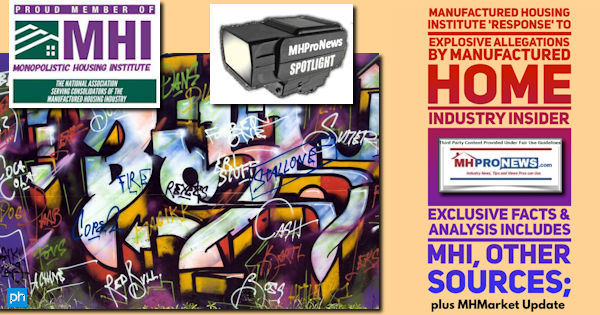
MHLivingNews will monitor what MHI does – or fails to do – in the light of these revelations, statements, concerns, and serious allegations. Because behavior, not mere words, will determine if MHI is acting as a true friend or a smiling foe for the industry’s independents. Notice that the recent Freddie Mac consumer research survey contradicts the notion DOE is pushing. Apparently, per the Freddie Mac survey, most consumers think (correctly) of manufactured homes as being energy savers. The full research results are posted in the report linked below.
Related reports with previous insights, several of which document several parts of Ghorbani’s claims and statements follow below. Watch for a follow up report planned for the days ahead. ##
https://www.manufacturedhomepronews.com/masthead/h-r-7651-manufactured-housing-affordability-and-energy-efficiency-act-of-2022-skopos-labs-govtrack-reveal-duplicity-or-madness-of-manufactured-housing-institute-mhi-advocacy-claims/
https://www.manufacturedhomepronews.com/masthead/manufactured-housing-institute-admits-does-manufactured-housing-energy-efficiency-standards-rule-conflicts-with-administrations-plans-to-ease-housing-costs-mharr-r/
https://www.manufacturedhomepronews.com/masthead/shock-manufactured-housing-institute-boldy-gives-unforced-error-doc-after-favorable-court-ruling-mhi-charged-throwing-lifeline-to-doe-energy-rule-mhi-admits-harms/
Stay tuned for more of what is ‘behind the curtains’ as well as what is obvious and in your face reporting that are not found anywhere else in MHVille. It is all here, which may explain why this is the runaway largest and most-read source for authentic manufactured home “News through the lens of manufactured homes and factory-built housing” © where “We Provide, You Decide.” © ## (Affordable housing, manufactured homes, reports, fact-checks, analysis, and commentary. Third-party images or content are provided under fair use guidelines for media.) (See Related Reports, further below. Text/image boxes often are hot-linked to other reports that can be access by clicking on them.)

By L.A. “Tony” Kovach – for MHProNews.com.
Tony earned a journalism scholarship and earned numerous awards in history and in manufactured housing.
For example, he earned the prestigious Lottinville Award in history from the University of Oklahoma, where he studied history and business management. He’s a managing member and co-founder of LifeStyle Factory Homes, LLC, the parent company to MHProNews, and MHLivingNews.com.
This article reflects the LLC’s and/or the writer’s position, and may or may not reflect the views of sponsors or supporters.
Connect on LinkedIn: http://www.linkedin.com/in/latonykovach
Related References:
The text/image boxes below are linked to other reports, which can be accessed by clicking on them.
https://www.manufacturedhomepronews.com/masthead/a-pimple-on-an-elephants-ass-white-house-manufactured-housing-lending-listening-session-logic-comments-as-prepared/
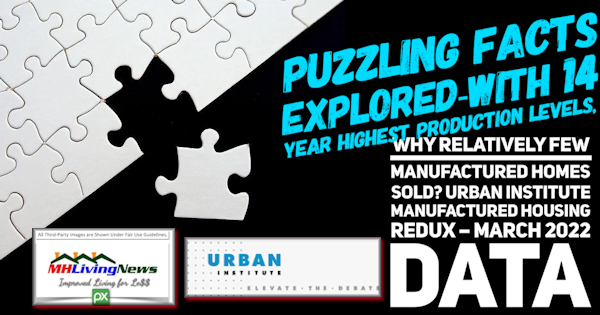
https://www.manufacturedhomepronews.com/masthead/manufactured-housing-institute-mhi-lashed-by-current-past-members-odd-defense-of-arlington-va-based-mhi-association-suggested-meeting-for-new-post-production-national-trade-group-considered/

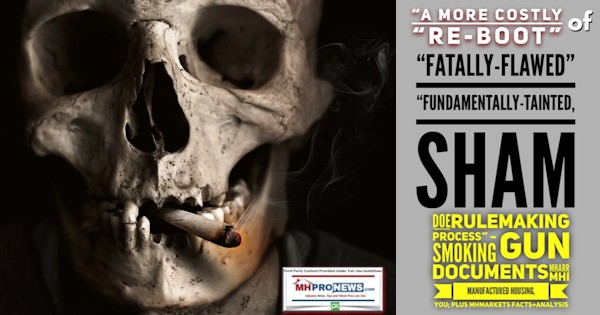
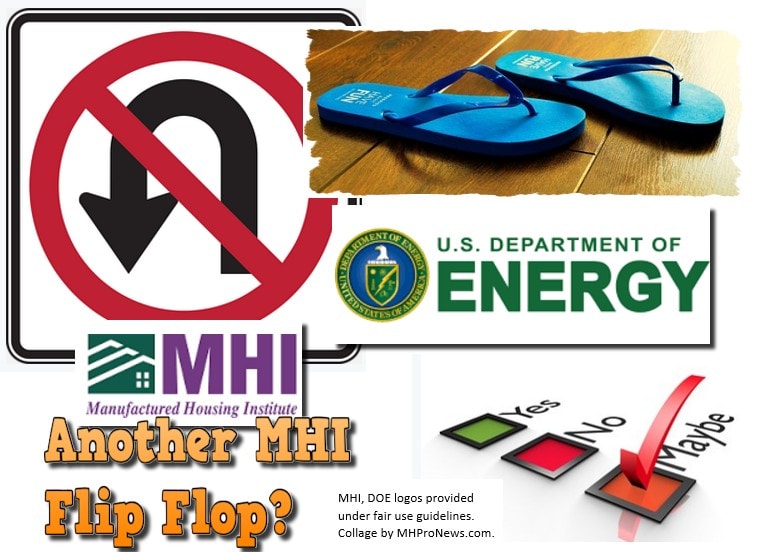
https://www.manufacturedhomepronews.com/masthead/energy-environment-institute-big-donors-conflicts-warren-buffett-mike-bloomberg-undermine-manufactured-housing-via-sierra-club-lawsuit/
https://www.manufacturedhomepronews.com/masthead/former-mhi-and-mharr-executive-danny-ghorbanis-keen-insights-on-history-and-value-of-homes-on-the-hill-for-manufactured-housing-exclusive-qa/
 manufacturedhomelivingnews.com Manufactured Home Living News
manufacturedhomelivingnews.com Manufactured Home Living News


